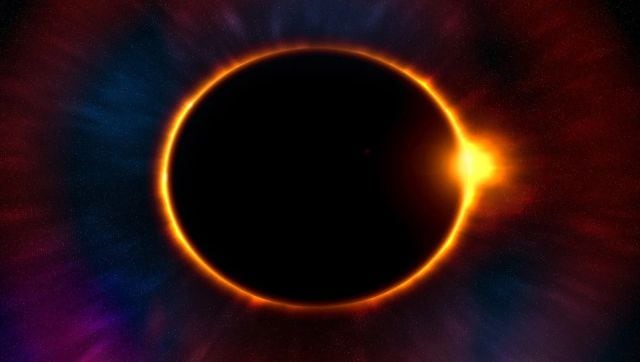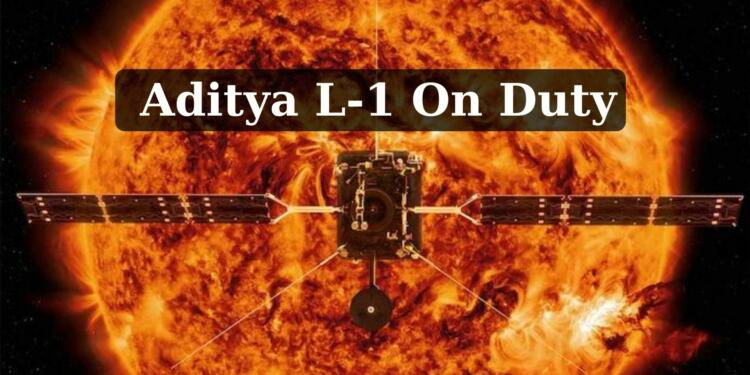India’s Aditya L-1 mission stands as a pioneering endeavor in solar research, poised to revolutionize our understanding of the Sun. Positioned in a halo orbit around Lagrangian point L1, approximately 1.5 million kilometers from Earth, Aditya L-1 enjoys uninterrupted observation of the Sun, providing invaluable insights into solar phenomena. As the world anticipates the upcoming total solar eclipse, Aditya L-1’s unique positioning underscores its significance, offering continuous monitoring unimpeded by eclipses or occultations. This rare celestial event presents an exceptional opportunity for scientific observation, further highlighting the critical role Aditya L-1 plays in advancing our knowledge of the Sun and its impact on our solar system.
Aditya L-1’s Unique Positioning
Aditya L-1, India’s pioneering solar mission, is strategically positioned at Lagrangian point L1, situated approximately 1.5 million kilometers from Earth. This specific point offers a stable equilibrium between the gravitational forces of the Earth and the Sun, enabling Aditya L-1 to maintain its position relative to both celestial bodies.
Uninterrupted Viewing of the Sun
The spacecraft’s placement at Lagrangian point L1 provides a distinct advantage uninterrupted observation of the Sun. Unlike Earth-bound observatories that are susceptible to eclipses and occultations, Aditya L-1 remains unaffected by such phenomena. This unobstructed view allows for continuous monitoring of solar activity, providing invaluable data for researchers studying the Sun’s dynamics and space weather.
Benefits of Real-time Monitoring
Aditya L-1’s ability to continuously monitor the Sun in real-time offers significant benefits for solar research and space weather forecasting. By observing solar phenomena such as flares, coronal mass ejections, and solar wind, scientists can better understand the Sun’s behavior and its impact on the Earth’s magnetosphere and ionosphere. This real-time data is crucial for predicting and mitigating potential hazards posed by space weather events, such as disruptions to satellite communications and power grids.
Role During Total Solar Eclipses
Despite its advantageous position, Aditya L-1 will not directly observe total solar eclipses. This is because the spacecraft is positioned behind the Moon during such events, rendering it unable to witness the eclipse. However, this does not diminish the mission’s significance, as it continues its vital task of solar observation.
Continuous Sun Tracking
During total solar eclipses, Aditya L-1 remains focused on its primary objective tracking the Sun. While Earth-based observers experience moments of darkness as the Moon blocks the Sun’s light, Aditya L-1 continues its observation, providing valuable insights into the Sun’s chromosphere and corona.

Instrumentation for Solar Observation
Aditya L-1 is equipped with sophisticated instruments tailored for solar observation, including the Solar Ultraviolet Imaging Telescope (SUIT) and the Visible Emission Line Coronagraph (VELC). These instruments allow for detailed imaging and analysis of the Sun’s outer layers, facilitating ongoing research into solar phenomena and their effects on space weather.
Also Read: Internet Security At Risk? Cyber Defense in the Wake of a Massive Breach
Collaboration with Ground-Based Observations
Aditya L-1’s observations are complemented by ground-based experiments during solar events such as eclipses. This collaboration enhances the scope and depth of solar research by combining data from space-based and terrestrial observations. Ground-based experiments provide additional perspectives and validation for the findings derived from Aditya L-1’s observations.
Example of Dr. Dipankar Banerjee’s Experiments
One notable example of ground-based experiments is Dr. Dipankar Banerjee’s research conducted in Dallas, Texas, during a total solar eclipse. Dr. Banerjee, a solar physicist from the Indian Institute of Astrophysics, leads experiments aimed at studying specific aspects of the Sun’s behavior during eclipses. Data collected from these experiments is compared with observations made by Aditya L-1, facilitating a comprehensive analysis of solar phenomena.
Information from ISRO’s Project Director
Nigar Shaji, the Project Director for Aditya L-1, provides insights into the operation modes of the Visible Emission Line Coronagraph (VELC) spectroscopic channels during eclipses. These channels are crucial for capturing detailed images of the Sun’s corona during eclipses. By operating in specialized observation modes, such as raster scan and sit-and-stare mode, VELC maximizes its effectiveness in studying coronal structures and emission lines.
Significance of Solar Eclipses in Scientific Research
Total solar eclipses are rare astronomical events where the Moon aligns perfectly between the Earth and the Sun, casting a shadow on Earth and momentarily blocking the Sun’s light. These occurrences offer unique opportunities for scientific observation and research.
Fascination Among Scientists
Solar eclipses have long captivated scientists due to their potential for unlocking mysteries of the Sun and its surrounding environment. Historically, solar eclipses have led to groundbreaking discoveries, including advancements in the understanding of solar dynamics, the structure of the Sun, and even the identification of new elements.
Importance of Studying the Sun’s Corona
One of the key reasons solar eclipses fascinate scientists is the opportunity they provide to study the Sun’s corona—the outer layer of the Sun’s atmosphere. Normally obscured by the Sun’s brightness, the corona becomes visible during total solar eclipses, offering valuable insights into its structure and dynamics. Understanding the corona is essential for predicting space weather phenomena such as solar flares, coronal mass ejections, and solar wind, which can impact Earth’s technological infrastructure and communications systems.
Relevance to Solar Dynamics and Space Weather Prediction
Studying solar eclipses contributes significantly to our understanding of solar dynamics and their implications for space weather prediction. By analyzing the behavior of the Sun and its corona during eclipses, scientists can better forecast solar activity and mitigate potential hazards to satellites, spacecraft, and terrestrial technology.
In conclusion, Aditya L-1 plays a pivotal role in solar research during total solar eclipses, offering continuous observation of the Sun’s dynamics from its strategic position at Lagrangian point L1. Collaborative efforts between Aditya L-1’s space-based observations and ground-based experiments, exemplified by Dr. Dipankar Banerjee’s research, enrich our understanding of solar phenomena. Solar eclipses serve as invaluable opportunities to study the Sun’s corona, facilitating advancements in space weather prediction and enhancing our comprehension of the Sun’s influence on Earth. Through Aditya L-1 and collaborative endeavors, we continue to unveil the mysteries of our star and its profound impact on our planet.
Also Read: ISRO Achieves Milestone with Aditya-L1, India’s First Solar Observatory reaches final destination




























